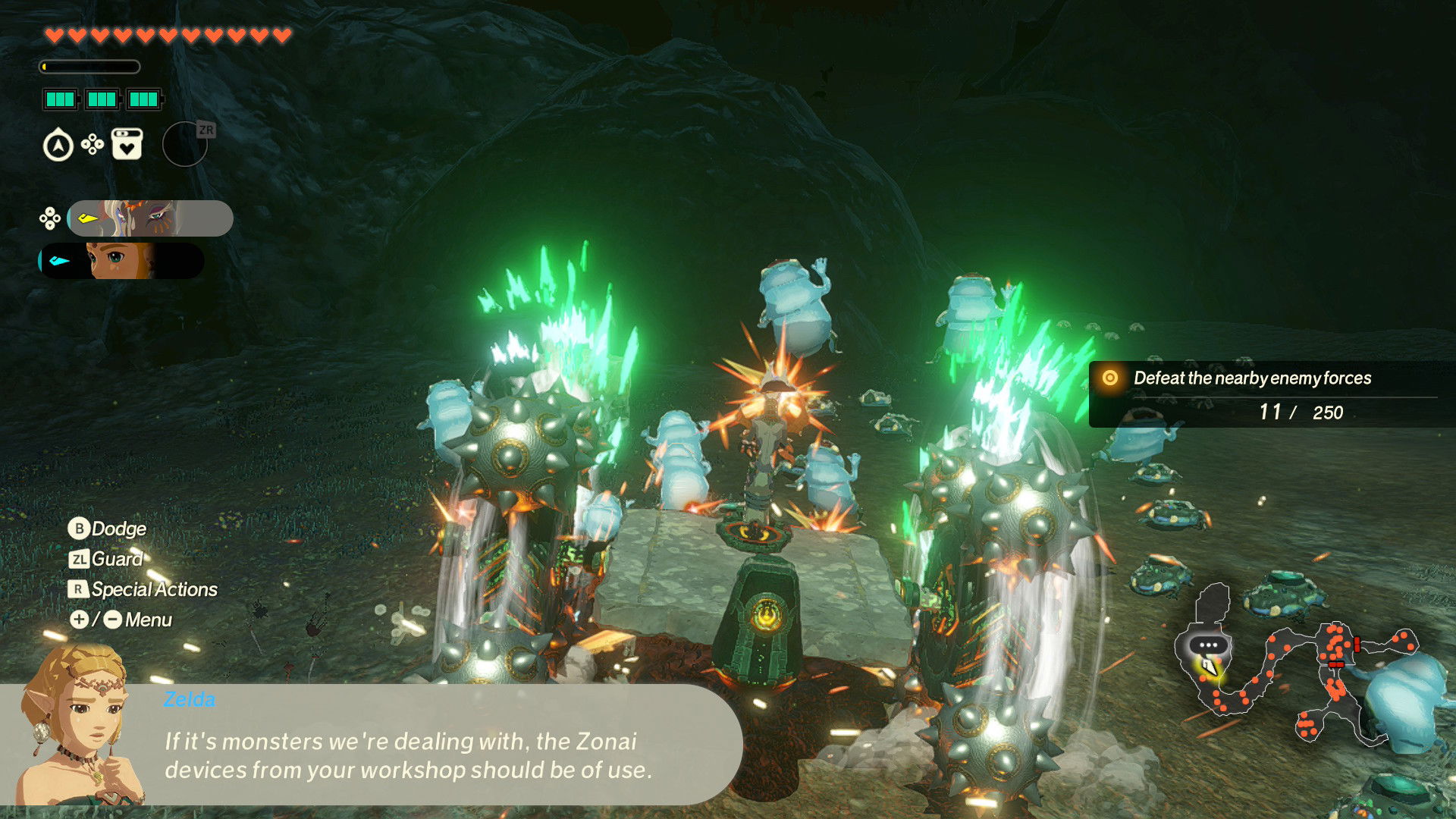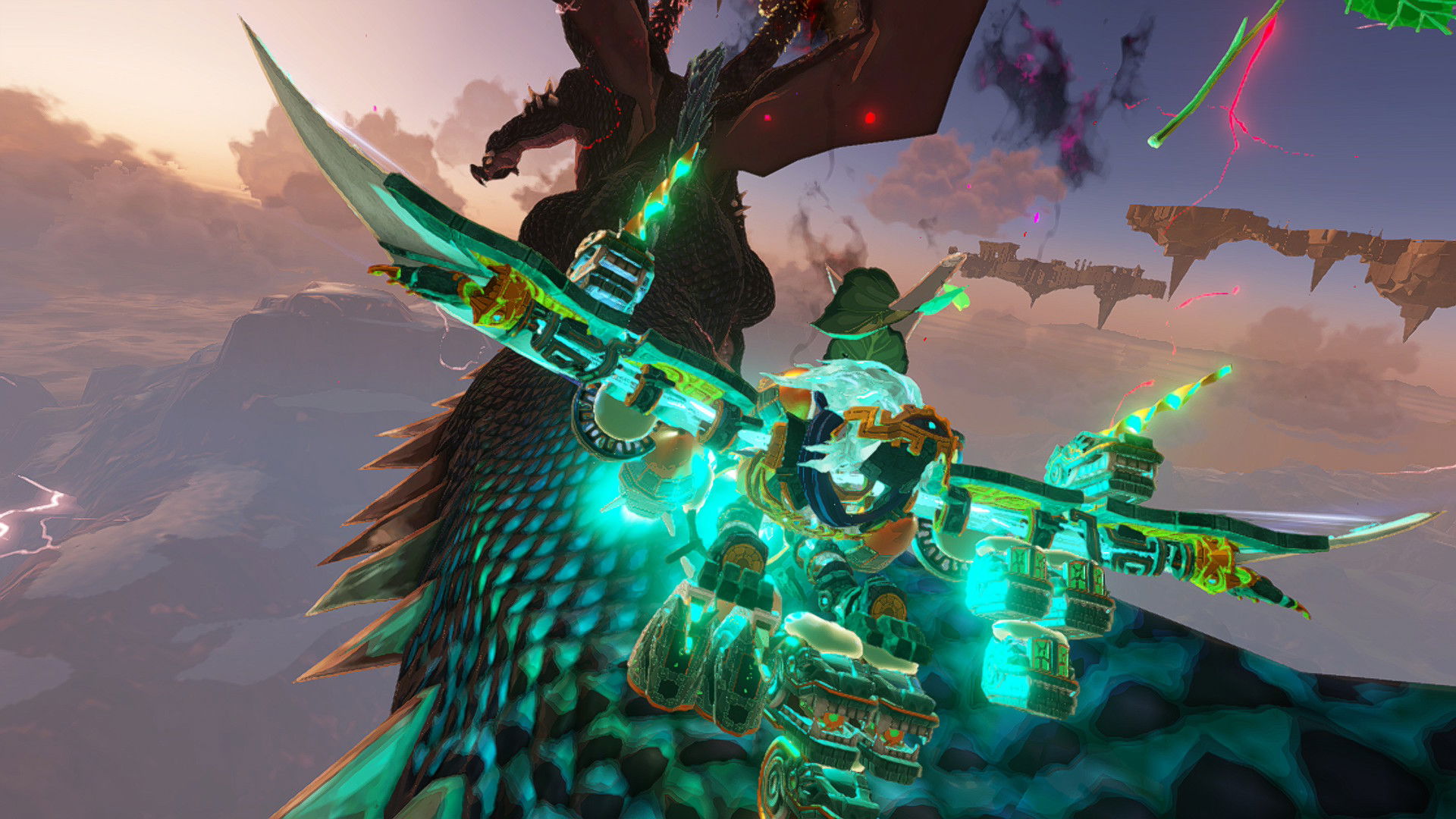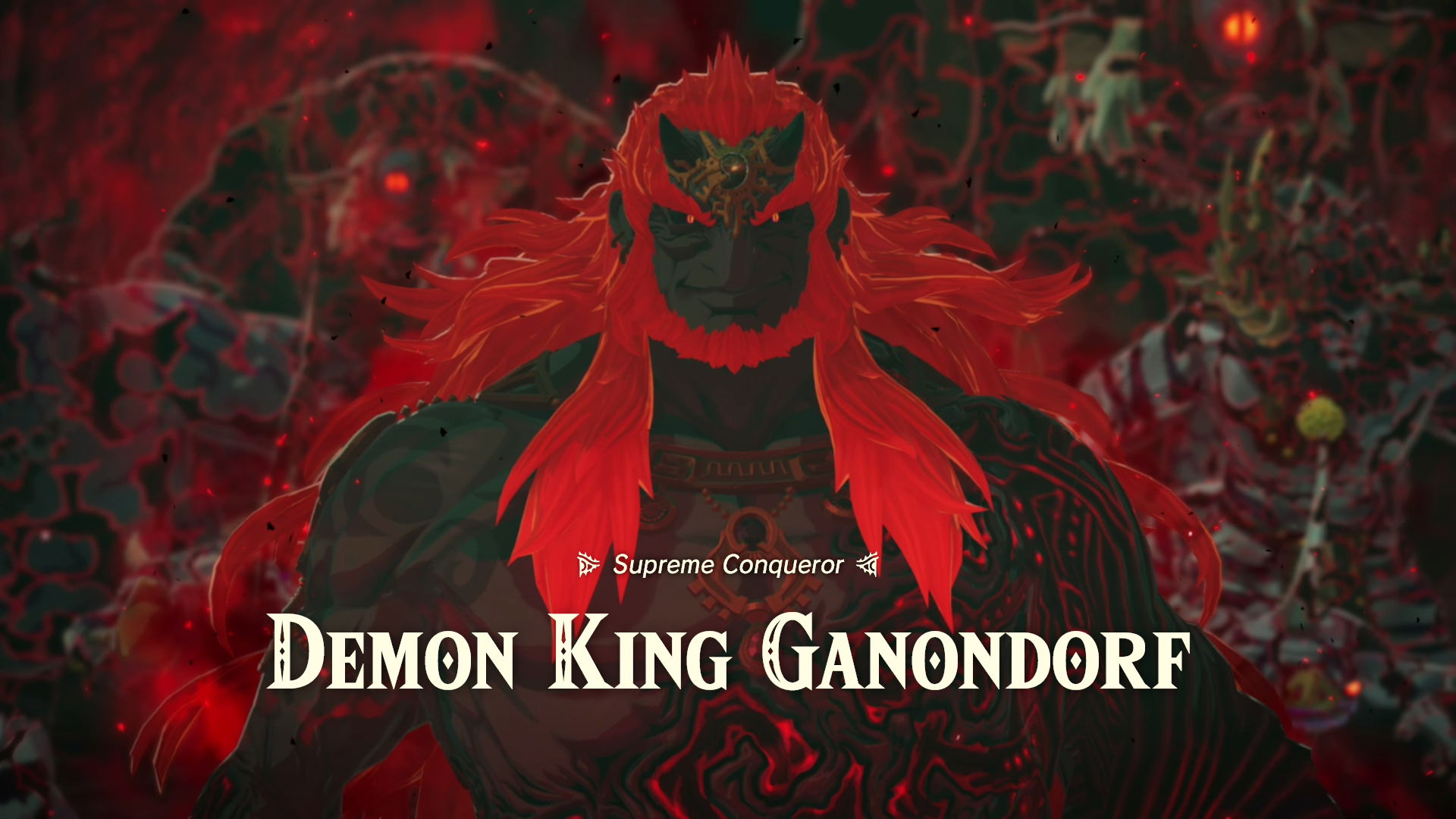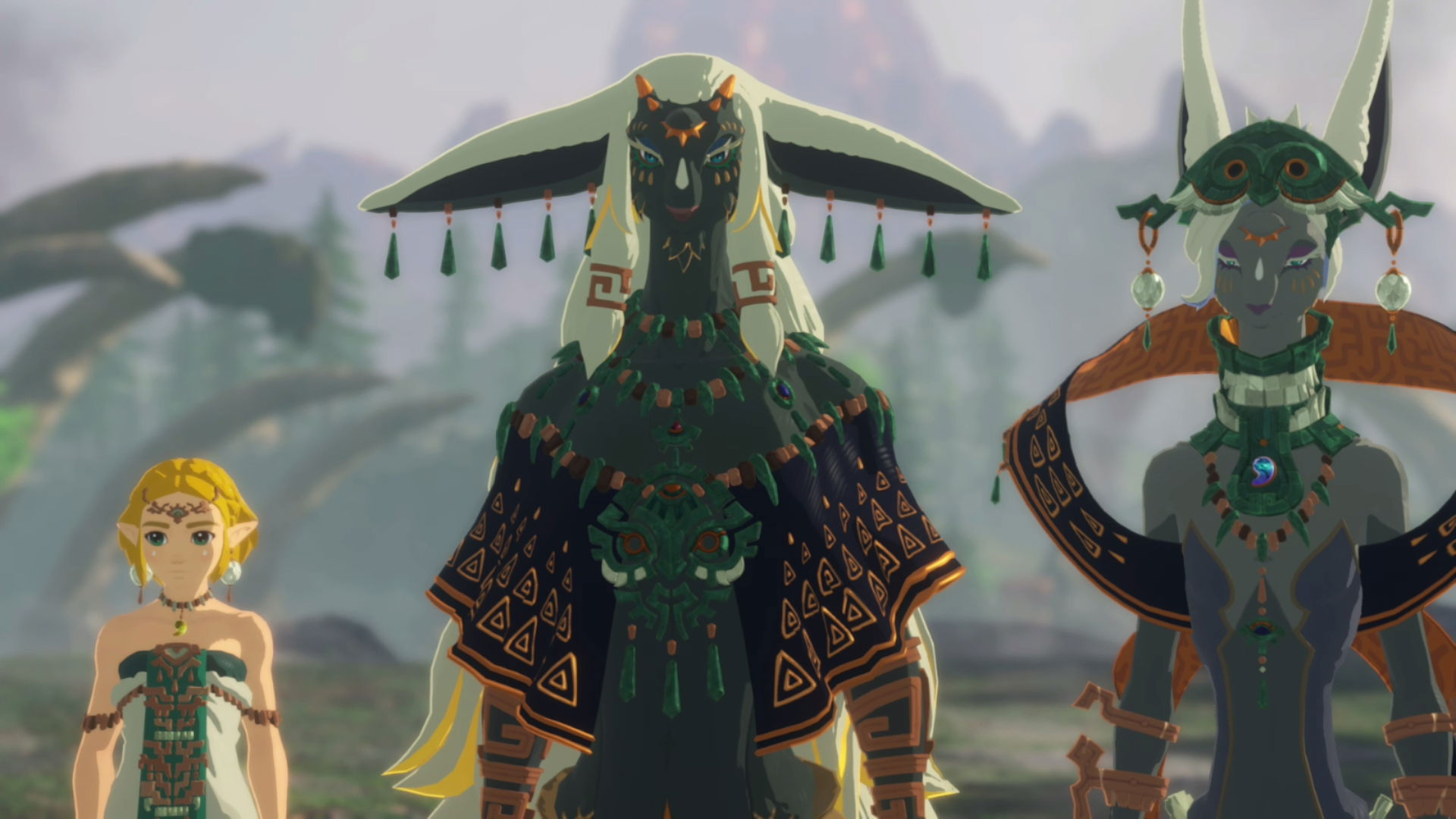It’s been quite the period for the Nintendo Switch 2 recently, and I’ve been doing my best to keep up and review all the big games. First came Pokémon Legends: Z-A, and Kirby Air Riders is out right now, with Metroid Prime 4 on deck. However, in between all of those was a surprising game that got announced earlier this year and expands upon one of the best games of recent years, Nintendo or otherwise. As my Hyrule Warriors Age Of Imprisonment Review will attest to, it adds to the legacy of a great line of titles, and you should definitely try it out.
Game Name: Hyrule Warriors Age Of Imprisonment
Platform: Nintendo Switch 2
Developer: Koei Tecmo
Publisher: Nintendo
Date: 11/06/25
Price: $69.99
Now, your first question might be, “Is this pretty much a new take on things, like with Age of Calamity?” The answer to that is emphatically, “No.” While I didn’t touch on it too much in my review of Age of Calamity, that narrative started out as a “canon event” before it became a kind of “Elseworlds” story that gave us a much more positive narrative overall. However, with Age of Imprisonment, this IS the canon story of what happened when Princess Zelda got taken back to the ancient version of Hyrule, met King Rauru and Queen Sonia, and how she was an essential part of trapping Ganondorf all those years ago. We only got a taste of that story previously, but this game expands upon it greatly, and that’s easily one of the best parts about the game.
I didn’t realize it at the time, but there were plenty of questions I should’ve asked during Tears of the Kingdom about how things went down outside of what we saw. Thankfully, the teams at Nintendo and Koei Tecmo understood that those scenes needed to be expanded upon and did it in a beautiful way, and not just with Zelda.
Rauru, Sonia, Mineru, the Sages, all of them, and many other characters get highlighted pretty darn well. Something I was really entranced by was how they made it clear that this was a WAR with Ganondorf once he got the Secret Stone. The Dragon Tear scenes from before only teased the conflict, but here, it’s fully fledged. We get to see the fall of Hyrule Castle, the struggle to get allies and fight off the monstrous legions of their enemy, the need that Rauru had to give the Sages the Secret Stones to give themselves a chance against Ganondorf, and so on.
Arguably, King Rauru comes off the best here, as we get to see the pain of loss not just for his queen, but how he has to overcome his grief, never fully lose hope, and be honest with himself about what is to come if he’s going to save everyone in the end.
Just as important is that numerous missions in the game flesh out the side cast to highlight not only their connection to Rauru and other characters, but also how they all tie into things.
For example, one of my favorite characters of the game is the Zora Queen, Qia. The twist with her is not only that she is 100% not like Mipha (whom I still mourn), but her father was king when Ganondorf came to power, and it was one of his Archfiends that killed him, forcing her into a role of leadership…even though she knew she wasn’t ready. Thus, her own quest is to become the Queen that her people need, get revenge for her father, and save Hyrule in the process.
There’s also Ardi, a Gerudo who is loyal to Ganondorf…until he betrays her group because they’d rather have peace with Hyrule than fight it. That betrayal scars her throughout the game, and she even blames herself for Ganon’s rise to power, even though the others don’t see it that way.
These interactions really make you love the cast and want to get to know them better. There are also fantastic interactions between characters like Rauru and Mineru, Raphica and Calamo (a Korok you will ACTUALLY LIKE), and so many more. Heck, Calamo and his “Bud” are a key friendship throughout the storyline, and it’s adorable from beginning to end.
In many ways, Hyrule Warriors Age Of Imprisonment is a tale about everyone coming together to fight for their homes, even if they’ve never fully seen eye-to-eye with one another. The game doesn’t shy away from that, and it’s a hallmark of Rauru’s leadership that he’s able to bring the Sages together for the war to come. Oh, and about that mysterious construct character…
Yes, this is a version of “Link,” if you will, but guess what? They actually make a logical canon reason for “him” to be in the game, and it’s honestly really cool! Plus, by the end of the game, they give Link’s legacy even more importance. This could’ve easily been a cop out addition to ensure “Link was represented,” but the team went the extra mile instead, and I’m grateful.
Alright, enough about the story, let’s get to the gameplay, shall we? My Hyrule Warriors Age Of Imprisonment Review will be honest about the game’s mechanics because….well…it is a Musou game, so you know what’s going to happen here. No matter who you pick, you’ll be put into various maps and asked to complete challenges so that you can win the day.
A pleasant surprise, though, is that there’s a LOT of strategy in play outside of what characters you pick. I was truly blown away by just how much you can do in the game to maximize your character’s abilities, weapons, combos, and so on.
For example, at the beginning of every mission, you’ll have the opportunity to “load up on supplies” to give your characters a boost in what they get. You can increase the EXP they receive, their movement speed across the map, how quickly their gauges fill up, and more.
Just as important, though, is that they use the elements and certain other abilities to throw in special strategies against key bosses. So, if you have one covered in muck, you need to hose it down with a Hydrant or a water-based attack to get rid of it. If they’re covered in armor, you need to throw a bomb-style attack at them to lower their defenses, and so on. Thus, it’s not so simple as just “button-mashing to victory.” If you use strategy, you’ll be able to overcome just about any boss with ease.
And that doesn’t even touch upon how every character in the game plays differently from one another. The roster is stacked with characters and weapon types, and it’ll be up to you to find your favorites to take on the majority of the maps. Some of my favorites were King Rauru, Mineru (who can literally summon a construct car to run over enemies!!!), Qui, Ardi, The Knight Construct, Calamo, and a few others.
Even when you’re dealing with members of the same race, like the Gorons or the Rito, they play differently, giving you new options to take on threats. Then, there’s Zonai devices, which all the characters can use to add extra damage to their attacks, exploit weaknesses, and so on.
Then, just when you think that’s not enough, there are the Sync Strikes, which are an incredible addition to the game. These allow two characters to come together to do a unified attack. Sometimes, they’ll do a true combo strike, like Rauru and Mineru working together to fling incredible spears at foes. Or, you could get an elemental power-up, like Ardi giving you a lightning infusion to boost your power.
It was a thrill figuring out all the different combos and how to get the ones I wanted to ensure I could get victory quickly. My favorite might be Mineru and the Knight Construct coming together, as she literally “pimps his ride” to make an incredibly dope construct vehicle to wipe out enemies with. I didn’t see that coming.
Oh, and speaking of things I didn’t see coming…
I’d be remiss in my Hyrule Warriors Age Of Imprisonment Review if I didn’t mention the other gameplay surprises that the title threw at me during the LONG campaign. For example, Calamo and the Knight Construct do multiple “sky missions” together where you get to use the Zonai Constructs to wipe out enemies in an arcade-style blitz, including taking on Gleeoks and a monster inside Death Mountain! It’s totally awesome.
Even in the later stages of the game, Koei Tecmo threw in some curveballs to ensure that nothing truly got stale, including using Mineru’s “Spirit Technique” to inhabit something that I couldn’t help but giggle with joy at the sight of. It was refreshing to see all that they did to keep you excited about the next main missions.
On the topic of quests, once again, there are plenty of side quests for you to do. These are used mainly to level up characters, get you Rupees to spend on improving weapons (or leveling up characters via a training camp), and buying items, while also getting you materials needed to improve your characters in other ways.
Yes, like before, you’ll have plenty of ways to improve your preferred characters by giving them new abilities, giving them more hearts, attack gauges, and so on. Even after beating the main campaign, you’ll be surprised by just how much there is to do. I haven’t completed the post-game content myself, but if you are one who wants to 100% the game, you’ll have quite a trek ahead between the main campaign, side quests, and post-game challenges.
As for quest “variety,” there arguably isn’t as much as Age of Calamity, but there are different mission types for you to take on, including time limit ones, clearing out a certain number of enemies, and having numerous bosses to take down before completion.
Before I get to my negatives, I do want to point out one last, and very important, positive: the visuals.
To be clear, I’m not just talking about the graphics, but the framerate, and all the animations for the various attacks. Musou games might be the “Koei Tecmo Specialty,” but you could very easily tell that they went full force (or is that, Omega Force…?) on this game. Not only did everything look stunning in the cutscenes and the overall battles, but for me, the frame rate never dropped.
I never had an issue while doing battles with hundreds, if not thousands, of enemies, and that was impressive. Oh, and I played in handheld mode, for the record. Just as important, the animation variety was incredible. Whether it was the Synch Attacks, the Special Attacks, Weak Point Strikes, or certain other moves, there was a variety. I talked about this in the Nintendo Entertainment Podcast recently, and it really did impress me because they didn’t NEED to do that.
For example, with Mineru, using the special attack gauge could have her summon multiple constructs to pierce you with spears before she tells you to “be gone,” or she could just summon a giant mace ball to drop on your head! Calamo can either drop a beehive on you to let them do the dirty work or attack you with giant boomerangs.
This variety adds to the fun, as it ensures that you’re not “seeing the same thing repeatedly, which can absolutely be a problem with Musou games. Thus, I’m happy that they did so many different kinds of attacks for all of these characters, so that every move truly “hits.”
All that being said, I do have to have a “negative section” in my Hyrule Warriors Age Of Imprisonment Review because there are things I found a bit lacking in one form or another.
For example, while I did adore the story, I felt there was more to tell before the credits rolled. Yes, the post-game stuff might “unveil that,” but I’d still nock it for locking it behind that. Furthermore, while I adored the cast, there were times I would get a new character…and then use them perhaps ONCE. There are plenty of missions that “lock you” to certain characters, but the full roster doesn’t get that treatment, and I feel that was a mistake.
Another mistake is definitely the game’s AI. While there are times it’s absolutely on point, such as with the “Switch” mechanic, which can be a huge boon in tough battles, there were other times when the AI was just standing around doing nothing. Or, in multiple cases, simply guarding, even when enemies weren’t attacking them. My NEP cohost Scott also noted this problem, so it’s not just me seeing it.
Finally, as I noted before, the game is long. That might not be a problem for some, but there were multiple times in the main campaign where I went, “Okay, final stretch is here…” and then I’d go back to the map and see about seven new side missions on top of the main one, and then after doing that main one…another batch of side quests arrive. Make no mistake, I appreciate the depth, and they do make it clear why some of these quests are necessary for the “war effort,” but if you’re someone who wants to get to the end in a good amount of time, it’s going to wear on you.
That goes double for the character improvement missions, where you need specific items, and some are ones you can only get in very specific ways, or in key missions where you can buy them from a special store.
As I end my Hyrule Warriors Age Of Imprisonment Review, I once again want to praise Nintendo and Koei Tecmo for taking this title as far as they did with the gameplay and the narrative. There really is plenty to enjoy here, including things I truly didn’t expect to enjoy…but absolutely did.
In many ways, this game makes me appreciate Tears of the Kingdom even more, and it’s a very worthy addition to “Year One” titles on the Nintendo Switch 2. If you loved BOTW and TOTK, you’ll want to get Age of Imprisonment.
Hyrule Warriors Age Of Imprisonment Review
Summary
Hyrule Warriors Age Of Imprisonment does a great job of building upon what Age of Calamity did, while also being a true canon story that will make you feel a deeper connection to Rauru, Mineru, Zelda, and the other characters you assist along the way. The level of detail and customization is incredible, and is to be praised, and only certain things hold it back from being as great as its predecessor.
Even still, this is another Switch 2 title that hits the mark, and it’s one you’ll definitely want to get to see Tears of the Kingdom in an even better light.
Pros
- Visuals and Animations Are Top Notch
- The Story Will Put Tears In Your Eyes (Pun Intended)
- Impressively Long Campaign…
- Incredible Amount Of Customization Between Character Choices, Abilities, and Weapon Options
- Calamo
Cons
- Some Characters Do Get Left In The Dust, Story-Wise
- AI Could’ve Been Better
- …But The Grind Will Get To You At Points
-
Hyrule Warriors Age Of Imprisonment Review











